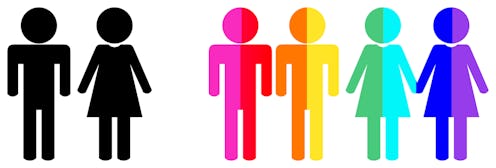Life
Brush Up On Your Feminism With This Quick Guide

You may think you're up on your feminism but are you up on your intersectional feminism? Do you even know what that means? If you’ve paid attention to feminist blogs for any amount of time, you’ve probably heard the word “intersectionality” more than once. For many people who are new to the movement or haven’t done much academic study of feminism, the concept of intersectionality can be a little confusing. Today, Transadvocate published a simple guide to intersectionality that makes the concept both easy to understand and easy to explain to other people who are new to feminism.
The term “intersectionality” was first coined by critical legal theorist Kimberlé Williams Crenshaw to explain, specifically, how race and gender interact in systematic oppression. The term is now used to describe other oppressions that make sexism different for people in other oppressed populations. Simply put, intersectional feminism includes the concerns of other oppressed populations in its advocacy. That includes considering how racism, transphobia, homophobia, fatphobia, and other types of oppression impact women differently. A truly inclusive feminism is intersectional, and leaves no woman (or their ideas) behind.
A prime example of a prominent feminist failing to consider intersectionality is Ani DiFranco. When she scheduled her “Righteous Retreat” at a Nottoway Plantation, there was obviously no consideration of how black women would react to being invited to celebrate feminism at a place that formerly housed slaves.
The same also applies to “TERFs,” or trans-exclusive radical feminists. These feminists, most prominently Cathy Brennan, are those that don’t believe that transgender women are “real women” (whatever that means), and that they shouldn’t be considered as part of the movement. TERFs troll the internet to harass transgender women, sometimes posting their personal information online. That’s no feminism I ever want to be a part of.
A feminism that is actively dedicated to dismantling patriarchy and empowering women should empower all women, and consider their specific concerns. Activist Flavia Dzodan famously said “my feminism will be intersectional or it will be bullshit,” and I’m inclined to agree. A feminism that isn't inclusive of all women will never be successful, and many times will still contribute to other types of oppression.
For further reading on intersectionality, Mapping The Margins: Intersectionality, Identity Politics, and Violence Against Women of Color by Kimberlé Williams Crenshaw is an essential text for all feminists. In the meantime, here is the handy guide.